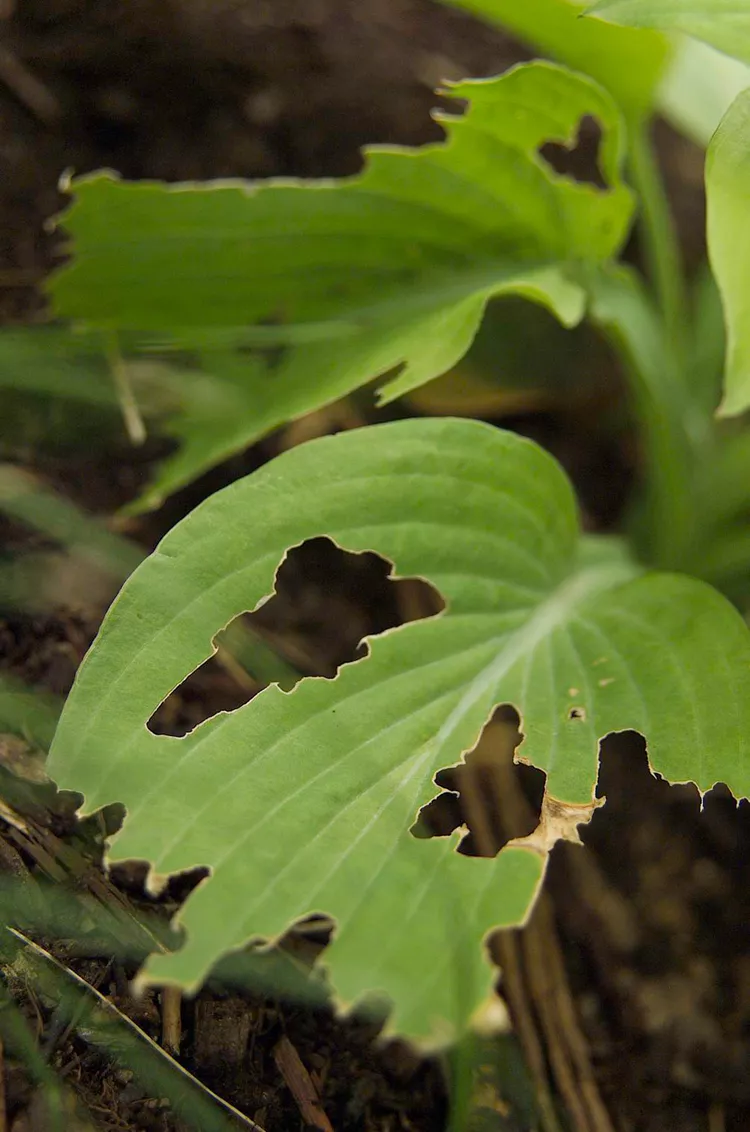If you've lately been lamenting, "What's eating my hostas?" on repeat, the answer is probably slugs. These gooey guys like to munch on the leaves of hosta—those reliable garden workhorses that come back year after year and adorn your yard with all sorts of textures and shades of green. If you're counting on the lush foliage to fill out your shady spaces, don't despair: There are several ways you can stop slugs in their slimy tracks and keep them away from your hostas all summer long.
Garden Pests That Eat Hostas
Before you declare war on slugs, confirm they're the ones making holes in your hosta leaves. Besides hail, cutworms could also be the culprits; their signature is chewing the soft parts of the leaves and avoiding the veins. Slugs will munch anywhere on the leaves, right through the veins. Deer and rabbits will eat hostas, too, but they don't leave holes behind. Instead, you'll likely see bare stems with maybe a ragged piece of leaf left behind.
How to Get Rid of Slugs
Make Them Uncomfortable
Slugs prefer damp places where they can slide around easily. Rake away any dead leaves near your hostas and add some rough mulch, like bark, around your plants. You can also sprinkle diatomaceous earth ($17, The Home Depot) around your hostas. Slugs don't like the sensation of the tiny, sharp crystals in this nontoxic powder. Ground-up eggshells can have the same effect. If you only have a small area to protect, try circling it with copper tape at ground level. The slime on the slug's foot chemically reacts with copper, giving the pest an electrical shock.
Follow Their Tracks
If you aren't too squeamish, hunt for slugs at night when they are most active. The beam of a flashlight will glint off their slimy trails, which you can follow to find the slugs making the tracks. Once you've located them, drown them in a container of soapy water or feed them to backyard chickens if you have them (chickens love slugs).
Create a Slug Hotel
Try this homemade remedy to protect hosta plants from bugs: Leave out a smooth piece of cardboard or a small wooden board on the ground in a damp, shady spot. Give the slugs a day or two to check in before turning over the cardboard or board and evicting your unwelcome guests.
Poison Slugs with Iron Oxide
Finally, there's the poison route. Make sure you don't use anything that might also harm birds, pets, and children—iron oxide, for example, is toxic only to slugs and snails. Scatter a slug bait with iron oxide, like Sluggo ($9, The Home Depot), around each hosta. Check back every two weeks or after big rains, and replace the bait if it's gone.
It may take several of these tactics to stop slugs from chewing holes in hosta leaves. You'll know your efforts are working when you start seeing new, undamaged leaves growing in, replacing the ones the slugs have been snacking on.




















